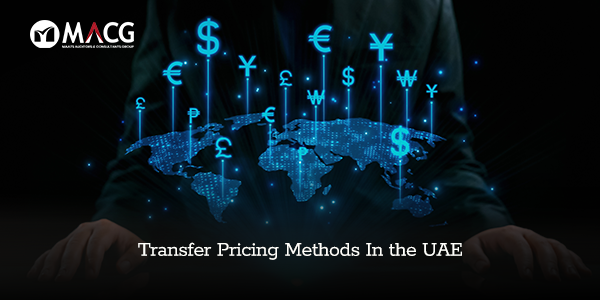As Transfer Pricing (TP) regulations mature in the UAE, businesses—especially multinational groups—must go beyond mere compliance to adopt robust, defensible pricing strategies aligned with OECD principles and the UAE Federal Tax Authority (FTA) guidance.
A cornerstone of this framework is the selection of the most appropriate Transfer Pricing method, based on a deep understanding of the functions performed, assets used, and risks assumed (FAR analysis) by each entity in the group.
Let’s decode the key Transfer Pricing methods—and more importantly, when and where to apply them.
1️⃣ Comparable Uncontrolled Price (CUP) Method
What it is: Compares the price charged in a controlled transaction to the price charged in a comparable uncontrolled transaction.
Best used when:
- The product/service is standardized or commoditized (e.g., crude oil, gold, licensing of established IP).
- Reliable market data or internal CUPs exist.
Entity profile:
🔹 Ideal for limited-risk distributors or IP holding companies licensing intangibles.
🔹 Also useful in back-to-back services and financial transactions (e.g., intra-group loans).
2️⃣ Resale Price Method (RPM)
What it is: Starts from the resale price to an independent party and subtracts an appropriate gross margin to determine the arm’s length price.
Best used when:
- The reseller adds limited value and does not alter the product significantly.
- Gross margin benchmarks are available for similar entities.
Entity profile:
🔹 Fits low-risk distributors, especially in consumer goods or electronics.
🔹 UAE-based marketing and sales support entities working on a buy-sell model with group affiliates.
3️⃣ Cost Plus Method
What it is: Adds an arm’s length mark-up to the costs incurred by the supplier of goods or services.
Best used when:
- The entity performs routine manufacturing, R&D, or support services.
- Inputs and costs can be reliably identified and matched with comparable gross margins.
Entity profile:
🔹 UAE entities acting as contract manufacturers, shared service centres, or R&D support units.
🔹 Useful for technical support centres and intra-group IT services.
4️⃣ Transactional Net Margin Method (TNMM)
What it is: Examines the net profit margin relative to an appropriate base (e.g., costs, sales, assets) that a taxpayer realizes from a controlled transaction.
Best used when:
- No reliable internal or external CUPs exist.
- One party performs simpler, lower-risk functions (tested party).
Entity profile:
🔹 Limited-risk entities (distributors, service providers, toll manufacturers) in the UAE.
🔹 Most routine intra-group service or manufacturing models use TNMM due to data availability.
5️⃣ Profit Split Method
What it is: Allocates combined profits from a controlled transaction among related parties based on the relative value of their contributions.
Best used when:
- Both entities perform non-routine, integrated functions, or share valuable intangibles.
- It’s hard to analyze transactions separately.
Entity profile:
🔹 Joint development of intangibles, co-marketing or shared IP exploitation.
🔹 Relevant for high-value digital services, pharma, or R&D hubs operating between the UAE and other jurisdictions.
How to Choose the Right Method?
The FTA Transfer Pricing Guide encourages a structured, reasoned selection of method based on:
- Functional profile of the UAE entity (routine vs strategic).
- Availability and reliability of comparable
- Nature of the transaction (goods, services, financing, IP).
- Degree of integration across the group.
There is no “one-size-fits-all” method. For example:
✅ A UAE contract R&D centre will likely apply Cost Plus or TNMM.
✅ A trademark licensor will prefer CUP or Profit Split, depending on IP complexity.
✅ A low-risk distributor will typically use TNMM or Resale Price.
Final Thoughts
In the UAE context, TP compliance is not only about filing the Disclosure Form, Master File, and Local File. It’s about articulating why a certain pricing method is most appropriate grounded in FAR analysis and commercial substance.
Choosing the right TP method is not a tick-the-box exercise—it’s a strategic decision that can impact your effective tax rate, audit exposure, and cross-border alignment.
If you’re navigating complex intra-group pricing scenarios—whether in free zones, multi-entity setups, or shared IP models—ensure your method selection tells a coherent story.


